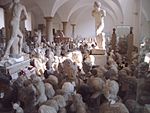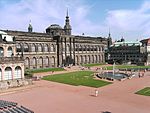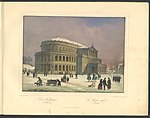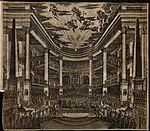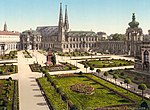Gemäldegalerie Alte Meister
1855 establishments in SaxonyArt museums established in 1855Staatliche Kunstsammlungen Dresden

The Gemäldegalerie Alte Meister (German pronunciation: [ɡəˈmɛːldəɡaləˌʁiː ˈʔaltə ˈmaɪstɐ], Old Masters Gallery) in Dresden, Germany, displays around 750 paintings from the 15th to the 18th centuries. It includes major Italian Renaissance works as well as Dutch and Flemish paintings. Outstanding works by German, French, and Spanish painters of the period are also among the gallery's attractions. The Old Masters are part of the Dresden State Art Collections. The collection is located in the Semper Gallery, the gallery wing of the Zwinger.
Excerpt from the Wikipedia article Gemäldegalerie Alte Meister (License: CC BY-SA 3.0, Authors, Images).Gemäldegalerie Alte Meister
Theaterplatz, Dresden Innere Altstadt (Altstadt)
Geographical coordinates (GPS) Address Nearby Places Show on map
Geographical coordinates (GPS)
| Latitude | Longitude |
|---|---|
| N 51.053611111111 ° | E 13.734722222222 ° |
Address
Zwinger
Theaterplatz
01067 Dresden, Innere Altstadt (Altstadt)
Saxony, Germany
Open on Google Maps

